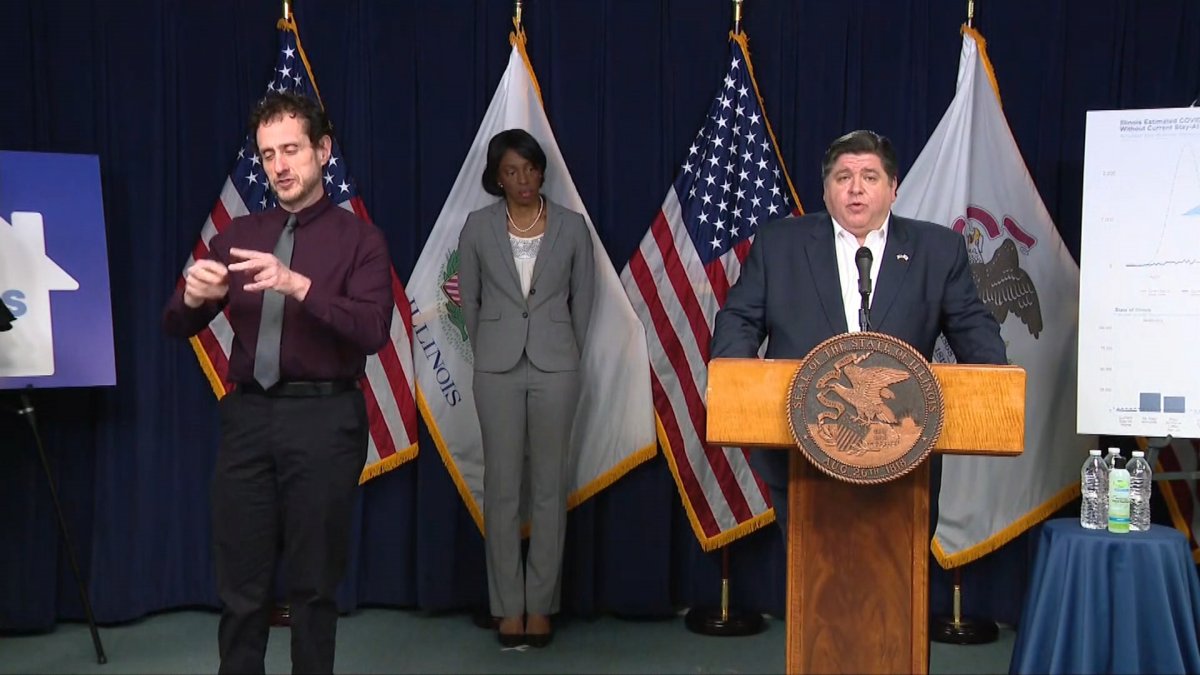
Illinois Gov. J.B. Pritzker announced an extension of the state’s stay-at-home order Thursday, a new mask requirement starting May 1 and the reopening of several types of businesses.
Restaurants across Illinois have been forced to cope with only offering curbside pickup and delivery for more than a month now.
And with the statewide stay-at-home order now extending through nearly all of May, many are shifting business models.
But what will things look like as the state begins to eventually reopen?
According to new guidance to restaurant owners from the National Restaurant Association, the answer is quite different.
Here's a look at what the association recommends for restaurants and guests when it comes time for reopening:
For Guests and Social Distancing Protocols
- Provide hand sanitizer for guests to use, including contactless hand sanitizing stations, and post signs reminding guests about social distancing.
- Try not to allow guests to congregate in waiting areas or bar areas. Design a process to ensure guests stay separate while waiting to be seated. The process can include floor markings, outdoor distancing, waiting in cars, etc.
- Consider an exit from the facility separate from the entrance. Determine ingress/egress to and from restrooms to establish paths that mitigate proximity for guests and staff
- Where possible, workstations should be staggered so employees avoid standing directly opposite one another or next to each other. Where six feet of separation is not possible, consider other options (e.g., face coverings) and increase the frequency of surface cleaning and sanitizing.
- Limit the number of employees allowed simultaneously in break rooms.
- Update floor plans for common dining areas, redesigning seating arrangements to ensure at least six feet of separation between table setups. Limit party size at tables to no more than the established “maximums approved” as recommended by CDC or approved by local and state government.
- Where practical, especially in booth seating, physical barriers are acceptable. Consider a reservations-only business model or call-ahead seating to better space diners.Any social distancing measures based on square footage should take into account service areas as well as guest areas.
- Post signage at the entrance that states that no one with a fever or symptoms of COVID-19 is to be permitted in the restaurant.
- Limit contact between waitstaff and guests. Where face coverings are not mandated, consider requiring waitstaff to wear face coverings (as recommended by the CDC) if they have direct contact with guests.
- If practical, physical barriers such as partitions or Plexiglas barriers at registers are acceptable.
For Cleaning and Sanitizing
- Discard all food items that are out of date.
- Where salad bars and buffets are permitted by local/ state officials, they must have sneeze guards in place.
- Change, wash and sanitize utensils frequently and place appropriate barriers in open areas.
- Alternatively, cafeteria style (worker served) is permissible with appropriate barriers in place.
- If providing a “grab and go” service, stock coolers to no more than minimum levels.
- Thoroughly detail-clean and sanitize entire facility, especially if it has been closed. Focus on high-contact areas that would be touched by both employees and guests. Do not overlook seldomtouched surfaces. Avoid all food contact surfaces when using disinfectants.
- Between seatings, clean and sanitize table condiments, digital ordering devices, check presenters, self-service areas, tabletops, and common touch areas. Single-use items should be discarded.
- Consider using rolled silverware and eliminating table presets.
- Remove lemons and unwrapped straws from selfservice drink stations.
- Clean and sanitize reusable menus. If you use paper menus, discard them after each customer use.
- Implement procedures to increase how often you clean and sanitize surfaces in the back-of house.
- Check restrooms regularly and clean and sanitize them based on frequency of use.
- Make hand sanitizer readily available to guests. Consider touchless hand sanitizing solutions
For Takeout and Delivery
- Ensure coolers and transport containers are cleaned and sanitized. Maintain time and temperature controls.
- Avoid cross contamination; for example, wrap food during transport
- Encourage customers to use “no touch” deliveries. Notify customers as the delivery is arriving
- Establish designated pick-up zones for customers. Offer curb-side pick-up
- Practice social distancing by offering to place orders in vehicle trunks